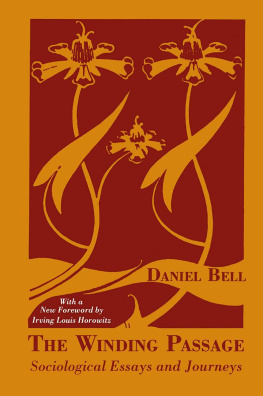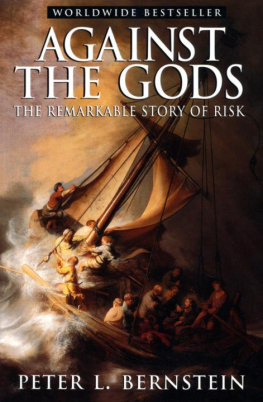Originally published in 1966 by Basic Books, Inc.
Published 1993 by Transaction Publishers
Published 2017 by Routledge
2 Park Square, Milton Park, Abingdon, Oxon OX14 4RN
711 Third Avenue, New York, NY 10017, USA
Routledge is an imprint of the Taylor & Francis Group, an informa business
New material this edition copyright 1993 by Taylor & Francis.
All rights reserved. No part of this book may be reprinted or reproduced or utilised in any form or by any electronic, mechanical, or other means, now known or hereafter invented, including photocopying and recording, or in any information storage or retrieval system, without permission in writing from the publishers.
Notice:
Product or corporate names may be trademarks or registered trademarks, and are used only for identification and explanation without intent to infringe.
Library of Congress Catalog Number: 92-35189
Library of Congress Cataloging-in-Publication Data
Nisbet, Robert A.
The sociological tradition/Robert A. Nisbet, with a new introduction by
the author.
p. cm.
Includes bibliographical references.
ISBN 1-56000-667-6
1. SociologyHistory. I. Title.
HMI9.N5 1993
301'09dc20 92-35189
CIP
ISBN 13: 978-1-56000-667-1 (pbk)
No changes of substance or text have been made in this edition. I continue, after a quarter of a century, to hold to the basic perspectives and analyses that form the framework of this book. The novel treatment of the history of sociologythat is, in terms of what I call unit-ideas instead of the customary biographical and systems-approachesyielded, along with some most welcome praise, critical reviews in a number of instances. I shall return to these criticisms and dissents shortly. First it is perhaps useful to explain how the book came to be written.
At Berkeley in the 1930s when I did both undergraduate and graduate work, there was no sociologyas this word was in use throughout most of the country at the timeto be had. I can't say that I missed it. Some sample reading of expressly labeled sociological works in the library didn't impress, much less edify me. In the first place, it seemed to me that so many of these books were simply introductory textbooks, each claiming to hold the secret of what sociology was all about. In one it might be culture as though the field of ethnology in America and England hadn't long ago opened up that area of human behavior. In another it might be social interaction, with no credit given pioneering works in American psychology going back at least as far as William James. In yet another it might be what was commonly called the integrated approach that generally meant not the illumination of a field of learning but instead snippets of psychology, political science, economics, geographyleftovers from other fields, as some unkind but accurate critic put it, instead of a field in and for itself. In so many of the books there was a sense of inferiority felt by the author almost as if he were a member of some minority group. In the main, there was little if any sense of a genuine field, comparable to chemistry, political science, or economics: only a rather thin and fragile network of arguments for a sociology rather than the kind of elementary principles one would find in introductory books in other areas of the modern university.
Additionally there was the air in many of these books of old fashioned uplift, of social work and social reformism. So much of American sociology was for many years no more than a social gospel. I wasn't surprised to find that a sizable contingent of sociologists, especially in midwestern and southern colleges and schools were renegade Protestant pastors happy to replace God with Society and original sin with social maladjustment. The suffix "ology" in American sociology down through the 1930s was clearly descended from the logos in St. Paul instead of Darwin, Mendel, and Pasteur.
There was not much respect among the other social scientists in academe for sociology, "Drink, Drains, and Divorce" was a common way of describing the subject matter of American sociological courses and textbooks. So was "The science of Leftovers" and "Organized Smatter" in reference to the eclectic, scissors-paste content of introductory sociology texts. No social science was as provincial, insular as was American sociology prior to the late 1930s. Sociology confined itself to American institutions, ideas, villages and cities, and problems. Any student signing up for anthropology, political science, and economics could be sure that a cosmopolitan, comparative, world-oriented body of lectures and readings lay ahead. Not in American sociology! Nor, in contrast to other social sciences, was there so much as a whiff of history.
By 1940 the modern renascence in American sociology was under way. With this renascence there was a decided decline in the provincialism, the spirit of social work and uplift, and the hangdog, ne'er-do-well collective manner of American sociologists. One could see clearly in the sociological journals the beginning of a new awareness of the world as a whole and, more particularly, of European sociology. References to Durkheim, Weber, Tnnies, Simmel, and others increased almost spectacularly. So did new conceptions of sociology as a science, or potential science, instead of, as old, merely a branch of social work and uplift.
Several forces combined to bring about the renascence. Harvard, long a holdout, commenced sociology, and the person brought to found it was Pitirim Sorokin, a vastly learned Russian emigre whose knowledge of European sociology was immense. Also in the 1930s Talcott Parsons began teaching at Harvard. His The Structure of Social Action in 1936 had a considerable influence on the field. An unusually gifted phalanx of graduate students, among them Robert Merton, George Homans, Kingsley Davis, Wilbert Moore, among others, were quick to respond to the prestige of Harvard and to the refreshing ideas and insights brought by Sorokin and Parsons. By the early 1940s these well-trained young sociologists were out on their own, Merton going to Columbia where he almost immediately became to that universityso long in the doldrums in sociologywhat Parsons was to Harvard. More than any other universityagain with the exception of ChicagoHarvard and Columbia, starting in the 1940s spearheaded the modern renascense.
A second great force in the rescue of American sociology from the insularity and ethnocentrism that had for so long gripped it was that great sea change generated by Hitler. Thanks to his anti-Semitic doctrines and practices, a rising number of Germany's, and Europe's, eminences in the arts and sciences began to cross the Atlantic and settle in the United States. In almost every field of learning this influx of Europeans, mostly but not entirely Jews, had an early and profound effect. America was especially blessed in the social sciences by this migration, and there was a marked increase in the effects of the sea change throughout the 1930s and 1940s. The venerable New School For Social Research, especially its new graduate center, became, as it was widely thought of, the University in Exile. Inevitably I became aware of, excited by these intellectual currents beginning to run through American thought in the late 1930s when I was working for the doctorate under F.J. Teggart at Berkeley. He was not a sociologist in the common American sensein fact, he disdained the wordbut he was a profound student of society and its institutions, and also of history and the comparative basis of any genuine science. The dissertation I emerged with was sociological in characterin the European sense of the word at leastand I gave attention to French sociologists, particularly Emile Durkheim. In sum, I was one of the rising number of young social scientists affected decisively by the broadening, enriching, in a word, the Europeanizing of American sociology. I felt that I had known American sociology at its worst and that now I was beginning to see something very different.












